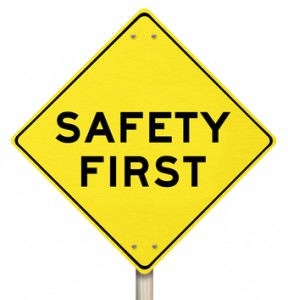 Spring has sprung and nice weather is (finally!) on the way!
Spring has sprung and nice weather is (finally!) on the way!
After a long, harsh winter, everyone is itching to get outside and enjoy the best that Mother Nature has to offer. However, before you head out to enjoy the great outdoors, please take a few moment to review the following farm safety tips:
Safety Tips for Driving in Agricultural Areas
A nice drive in the country can be relaxing way to spend a sunny and care free afternoon. Unfortunately, that relaxing spin down a scenic rural road can turn deadly in an instant if a steep hill, sharp turn or blind curve suddenly reveals a slow-moving farm vehicle.
If you are caught off guard, this can lead to deadly consequences for you, your passengers and the farmer driving in front of you.
From early spring until late fall, farmers are especially busy in their fields. Many fields that farmers use to grow crops or keep livestock are not adjacent to their property – and they must share the road with you. They have the same rights as everyone else to use the roads, but it takes some special driving savvy from everyone to share the road.
When driving in farm areas, please practice the following safety tips:
- Watch Out for Unexpected Turns. The most common farm-related vehicle accidents occur when motorists try to pass farm vehicles, especially as they are turning left. The tractor appears to be pulling to the right side to allow cars to pass, but is really preparing to make a wide left turn. Think ahead and check the left side of the road for gates or driveways and watch closely for hand signals.
- Practice Patience. Remember that tractors and equipment usually are not on the road for over a couple of miles. The time spent behind them often equals the time you would wait at a few traffic lights in town. Wait until you can safely pass.
- Watch Your Speed! Since many farm vehicles cannot travel more than 25 mph, they are often rear-ended by faster moving vehicles. Since it’s difficult to judge traffic speed from a distance, slow down as soon as you see an SMV emblem (orange triangle with a red border). As you approach a slow-moving vehicle, the distance between the two of you will disappear a lot faster than you might think.
- Look Sharp in Amish Country. A collision with a horse-drawn buggy and its passengers is a recipe for disaster, so be sure to exercise extra caution when driving in areas inhabited by the Amish. (Their black buggies are especially hard to see at night). If you find yourself behind an Amish buggy, follow at a reasonable distance and then pass when you have good visibility and the road is clear. Also, please do NOT sound your horn, as it can scare some horses.
Farm Safety for Children
Drivers aren’t the only ones who need to exercise caution in agricultural areas. Farmers also need to keep an eye on safety issues, as well.
Does your farm provide a safe environment for children? Is there a safe place for them to play away from livestock, equipment and other hazards? Do you ask them to perform chores that may put them at risk of injury?
Every year, nearly 5,000 children are injured and 300 killed on U.S. farms. Many incidents involve farm youth who are “extra riders” or victims of tractor rollovers. In addition to these types of injuries and fatalities, run-over accidents also present a significant risk to younger children. Pre-schoolers are at a high risk for run-over incidents because they often approach large farm tractors or machinery out of the equipment operator’s field of vision.
Livestock can also be dangerous for children on the farm. Accident reports suggest that young people working or playing around farm animals are exposed to crushing or kicking hazards, which can result in disabling injuries. Other hazardous farm exposures include ponds, silos, grain bins, crop-protection products and portable irrigation systems.
Farm machinery has gotten larger, faster, and more powerful. It is our job to educate our children about the many risks involved with them. They are inexperienced and naturally curious, lacking knowledge about the many dangers and some have a little dare devil in them. We must provide explanations at an early age, set rules and then enforce them.
Some Final Words of Advice for the Busy Farmer:
According to statistics, farm workers over 55 years of age account for almost one-half of all fatal accidents. Don’t be one of them!!! Take rest breaks when needed and always use tools, jacks, and hoists when moving heavy objects.
Finally, always let someone know of your plans for the day and use technology (such as cell phone or two-way radio) to ask for assistance when needed.